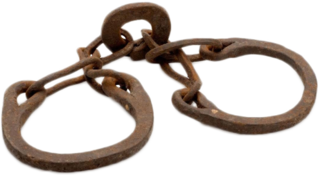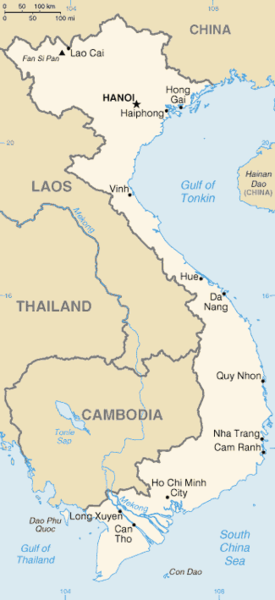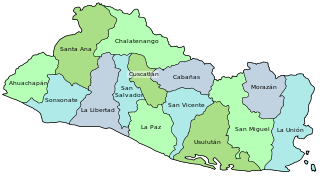Related Research Articles

In 2006, Cambodia was a source, transit, and destination country for human trafficking. The traffickers were reportedly organized crime syndicates, parents, relatives, friends, intimate partners, and neighbors.
In 2008, Taiwan was primarily a destination for men, women, and children trafficked for the purposes of forced labor and sexual exploitation. It is also a source of women trafficked to Japan, Australia, the United Kingdom, and the United States. Women and girls from the People's Republic of China (P.R.C.) and Southeast Asian countries were trafficked to Taiwan through fraudulent marriages, deceptive employment offers, and illegal smuggling for sexual exploitation and forced labor. Many trafficking victims were workers from rural areas of Vietnam, Thailand, Indonesia, and the Philippines, employed through recruitment agencies and brokers to perform low skilled work in Taiwan’s construction, fishing, and manufacturing industries, or to work as domestic servants. Such workers were often charged high job placement and service fees, up to $14,000, resulting in substantial debt that labor brokers or employers use as a tool for involuntary servitude. Many foreign workers remained vulnerable to trafficking because legal protections, oversight by authorities and enforcement efforts were inadequate.
According to the United States Department of State, "Thailand is a source, destination, and transit country for men, women, and children subjected to forced labour and sex trafficking." Thailand's relative prosperity attracts migrants from neighboring countries who flee conditions of poverty and, in the case of Burma, military repression. Significant illegal migration to Thailand presents traffickers with opportunities to coerce or defraud undocumented migrants into involuntary servitude or sexual exploitation. Police who investigated reaching high-profile authorities also received death threats in 2015.

The United Kingdom (UK) is a destination country for men, women, and children primarily from Africa, Asia, and Eastern Europe who are subjected to human trafficking for the purposes of sexual slavery and forced labour, including domestic servitude. It is also a source country since some victims, including minors from the UK, are also sex trafficked within the country. British citizens accounted for 25% (4,299) of all recorded potential victims in 2023, when they represented the most frequently referred nationality. The majority of UK nationals were child potential victims.
In 2008 Vietnam was primarily a source country for women and children trafficked for commercial sexual exploitation and forced labor. Women and children were trafficked to the People’s Republic of China (P.R.C), Cambodia, Thailand, the Republic of Korea, Malaysia, Taiwan, and Macau for sexual exploitation. Vietnamese women were trafficked to the P.R.C., Taiwan, and the Republic of Korea via fraudulent or misrepresented marriages for commercial exploitation or forced labor. Vietnam was also a source country for men and women who migrate willingly and legally for work in the construction, fishing, or manufacturing sectors in Malaysia, Taiwan, P.R.C., Thailand, and the Middle East but subsequently face conditions of forced labor or debt bondage. Vietnam was a destination country for Cambodian children trafficked to urban centers for forced labor or commercial sexual exploitation. The country had an internal trafficking problem with women and children from rural areas trafficked to urban centers for commercial sexual exploitation and forced labor. Vietnam was increasingly a destination for child sex tourism, with perpetrators from Japan, the Republic of Korea, the P.R.C., Taiwan, the UK, Australia, Europe, and the U.S. In 2007, an Australian non-governmental organization (NGO) uncovered 80 cases of commercial sexual exploitation of children by foreign tourists in the Sa Pa tourist area of Vietnam alone.

Human trafficking is the act of recruiting, transporting, transferring, harboring, or receiving individuals through force, fraud, or coercion for the purpose of exploitation. This exploitation may include forced labor, sexual slavery, or other forms of commercial sexual exploitation. It is considered a serious violation of human rights and a form of modern slavery. Efforts to combat human trafficking involve international laws, national policies, and non-governmental organizations.
In 2010, Human trafficking in India, although illegal under Indian law, remained a significant problem. People were frequently illegally trafficked through India for the purposes of commercial sexual exploitation and forced/bonded labour. Although no reliable study of forced and bonded labour was completed, NGOs estimated this problem affected 20 to 65 million Indians. Men, women and children were trafficked in India for diverse reasons. Women and girls were trafficked within the country for the purposes of commercial sexual exploitation and forced marriage, especially in those areas where the sex ratio is highly skewed in favour of men. Men and boys were trafficked for the purposes of labour, and may be sexually exploited by traffickers to serve as gigolos, massage experts, escorts, etc. A significant portion of children are subjected to forced labour as factory workers, domestic servants, beggars, and agriculture workers, and have been used as armed combatants by some terrorist and insurgent groups.
Indonesia is a source, transit, and destination country for women, children, and men trafficked for the purposes of commercial sexual exploitation and forced labor. The greatest threat of trafficking facing Indonesian men and women is that posed by conditions of forced labor and debt bondage in more developed Asian countries and the Middle East.
Sex trafficking in Thailand is human trafficking for the purpose of sexual exploitation and slavery that occurs in the Kingdom of Thailand. Thailand is a country of origin, destination, and transit for sex trafficking. Sexual exploitation of children is a problem, close to 40,000 children under the age of 16 are believed to be in the sex trade, working in clubs, bars, and brothels.

China is a main source and also a significant transit and destination country for men, women, and children who are subjected to trafficking in persons, specifically forced labour and forced prostitution. Women and children from China are trafficked to Africa, Europe, Latin America, the Middle East, and North America, predominantly Taiwan, Thailand, Malaysia, and Japan for commercial sexual exploitation and forced labour. Women and children from Myanmar, Vietnam, Mongolia, former USSR, North Korea, Romania, Indonesia, Nepal, Pakistan, and Ghana are trafficked to China for commercial sexual exploitation and forced labour.

Human trafficking in Texas is the illegal trade of human beings as it occurs in the state of Texas. It is a modern-day form of slavery and usually involves commercial sexual exploitation or forced labor, both domestic and agricultural.
Crime in Taiwan ranges from food adulteration, bombing, assassination attempts, hostage crisis, murder etc. However, crime statistics show that crime rates in Taiwan are among the lowest in the world, and are relatively low compared to much of the developed world. A 2020 report named Taiwan the second-safest country in the world, based on low crime rates and a high number of survey respondents who indicated that they felt safe walking alone at night.
Sex trafficking in China is human trafficking for the purpose of sexual exploitation and slavery that occurs in the People's Republic of China. It is a country of origin, destination, and transit for sexually trafficked persons.

Sex trafficking in Vietnam is human trafficking for the purpose of sexual exploitation and slavery that occurs in the Socialist Republic of Vietnam. Vietnam is a source and, to a lesser extent, destination country for sexually trafficked persons.
Sex trafficking in Laos is human trafficking for sexual exploitation and slavery that occurs in the Lao People's Democratic Republic. Laos is primarily an origin country for sexually trafficked persons.

Sex trafficking in Hong Kong is human trafficking for the purpose of sexual exploitation and slavery that occurs in Hong Kong. Hong Kong is a city of origin, destination, and transit for sexually trafficked persons.
Sex trafficking in Japan is human trafficking for the purpose of sexual exploitation and slavery that occurs in the country. Japan is a country of origin, destination, and transit for sexually trafficked persons.

Sex trafficking in El Salvador is human trafficking for the purpose of sexual exploitation and slavery that occurs in the Republic of El Salvador. It is a country of origin, transit, and destination for sexually trafficked persons.
Rape in Taiwan is sexual assault involving sexual penetration carried out against a person without their consent in the nation. Victims and perpetrators include Taiwan citizens, residents, and foreign nationals from a wide range of backgrounds and every social class.
References
- 1 2 "Taiwanese alleged POGO trafficking victim says she was told there is a 'protector' in gov't". GMA. February 12, 2020.
- 1 2 3 4 "Sex trafficking ring busted, Vietnamese women rescued". Focus Taiwan. November 18, 2019.
- 1 2 "Taiwan News: 7 Human Trafficking Suspects Arrested in Missing Vietnamese Case". The News Lens. January 22, 2019.
- 1 2 "Taiwan's human trafficking issue". Taipei Times. November 26, 2006.
- 1 2 "How migrant workers become human trafficking victims in Taiwan". AP Migration. August 3, 2015. Archived from the original on February 12, 2022. Retrieved April 28, 2020.
- 1 2 "Taiwanese trafficking victim who escaped POGO sex den comes forward". philstar. February 12, 2020.
- ↑ China (Taiwan), Ministry of Foreign Affairs, Republic of (2022-07-22). "Taiwan retains US Tier 1 anti-human trafficking status". Taiwan Today. Retrieved 2024-04-26.
{{cite web}}: CS1 maint: multiple names: authors list (link)